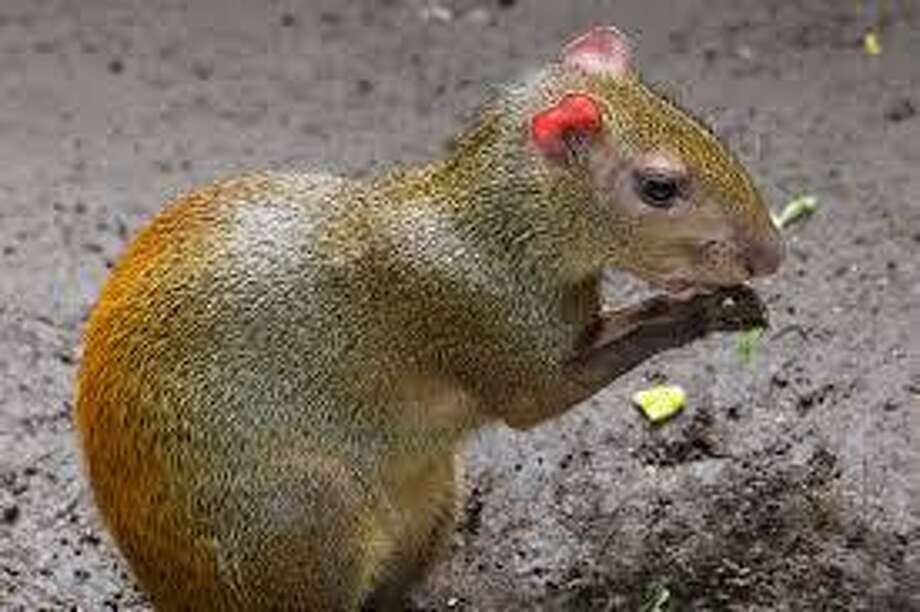
We followed the fate of seeds 3–14 mm in diameter through three processes after seed deposition: secondary dispersal, predation, and seedling emergence. We expected that seeds dispersed by howlers would have a different fate from those dispersed by capuchins and guans, since their scattered defecations are less attractive to dung beetles. Howlers produce clumped defecations that attract dung beetles, which provide secondary dispersal by burying seeds embedded in feces. We compared the fate of seeds dispersed by howlers to dispersal by two other frugivores present in the park: capuchin monkeys (Sapajus nigritus) and guans (Penelope superciliaris). Howler monkeys (Alouatta guariba) have been reintroduced in Tijuca National Park, a defaunated Atlantic Forest fragment. However, their effects on ecological processes have seldom been assessed. Species reintroductions have been proposed as a strategy for reversing local disperser extinctions. The loss of larger frugivores alters seed dispersal. The buried seeds are from zoochoric large-seeded trees, thus enhancing recruitment in a disperser-impoverished forest. Agoutis were seen eating fruits and seeds of 10 species and burying seeds of three of them. Among the main recommendations for future reintroductions, we suggest the reduction of quarantine and the maintenance of acclimatization periods, with structural improvements for both. The reintroduction was considered successful in the short-term. The estimated annual survival rate was 0.83, and 10 nature-born cubs were observed. Individuals abandoned the food supplement up to 87 days after release, establishing home-ranges at least three times larger than in natural populations of agoutis. Six males and three females died, but the others gained weight during acclimatization (range=150-260 g n=5).

One male died and almost all individuals lost weight (range=0-620 g n=11) during quarantine (median=133 days range=67-243 days n=20). We captured and tagged 21 adult individuals from a semi-captive population and reintroduced four males and seven females.

Here we report on the reintroduction of agoutis, Dasyprocta leporina, to a Brazilian Atlantic Forest reserve in order to (1) determine the short-term status of the reintroduction (2) describe and evaluate the management procedures that contributed to reintroduction success and (3) identify the fruits and seeds consumed and buried by the agoutis, as an indication of their role in restoring ecological processes. Evaluating the success of reintroduction projects allows conservationists to learn from previous experience. They have one to four offspring at a time after a 104 to 120 day gestation period.Reintroduction is an increasingly important tool to restore local extinctions and ecological interactions. This specific species does not have data around their mating cycles, but based on other members of their family, it’s thought that they mate twice annually if enough food is available. In the wild, they often live in pairs or small family units with other parents and their offspring. Family LifeĪs a monogamous species, the agoutis need a large space to court and mate, which does not lend well to easy breeding in captivity. To eat, agoutis sit on their hind legs and hold the food in their forepaws. Oftentimes, much like a squirrel, they store their food to prepare for a shortage. Their favorite foods are seeds and nuts, but in the event that there is a shortage of those items, they can and will consume items like leaves, other animals, and various kinds of plants.

Their habitat varies vastly as they mainly look for land that offers good shelter to build their home deserts, swamps, shrublands, flooded grasslands, savannas, and mangroves are all common habitats for the species to live. The orange-rumped agouti is found in areas of northeast South America and even on some islands along its coast. They frequently live in small groups, believed to be both for protection and because they are very social animals. A relative of the guinea pigs, the orange-rumped agouti look similar but are larger and have longer legs, making them efficient runners.


 0 kommentar(er)
0 kommentar(er)
